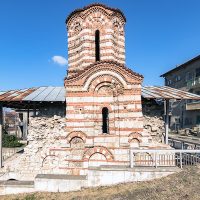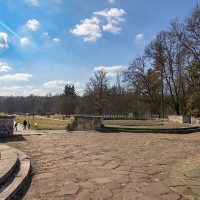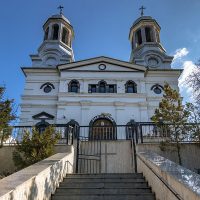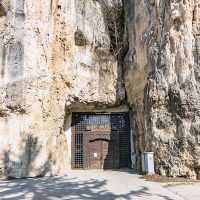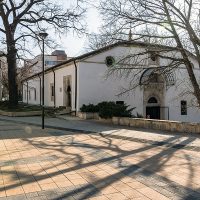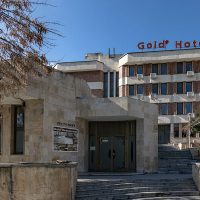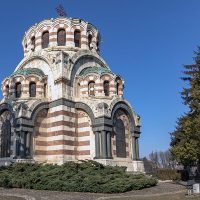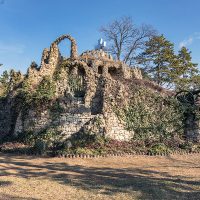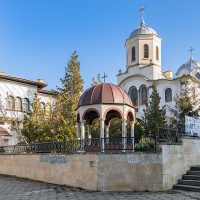








This unique museum in Bulgaria was raised in honor of liberating Bulgaria from Ottoman rule. Construction began on January 19, 1977, and the official opening took place on December 10, 1977, exactly 100 years after the liberation of Pleven. The authors of the architectural design are the architect Plamena Țaceva and its colleague Ivo Petrov. The museum is built right on the battlefield, in the Skobelev Museum-Park. The Panorama Museum is part of the monuments built in memory of the Russians, Romanians and Bulgarians who died in the Russian-Turkish liberation war and is included in the 100 national tourist objectives.. The building is shaped like a cone trunk, framed by four stylized bayonets. A bayonet ring symbolizes the city blockade, and the three horizontal rings represent the three attacks on the town of Pleven. The museum is organized intofour halls:
– Introductory Hall – includes 4×3.60 meters paintings, reflecting the period of Ottoman oppression, the April Rebellion, the Saint Petersburg Manifesto in support of the Bulgarian people, the Russian Army crossing the Danube River, the protection of the flag of Samara, the Battle of Shipka.
– The Panoramic hall – on a panoramic linen cloth, with a total area of 2,375 square meters, was recreated the bloodiest battle of Pleven, the third assault on the redoubt from September 11-12, 1877.
– Diorama projection hall – on a canvas sized 17 x 5 meters was presented the last battle for Pleven, fought at night on the valley of the Vit river, on December 10, 1877.
– The final hall –on two paintings sized 4 X 3.60 meters, is presented the capitulation of Osman Pasha and the crossing of the Balkan Mountains by the Russian army in the middle of winter. Also, in the museum we can see many exhibits related to this historical moment, weapons, uniforms, personal belongings of officers and soldiers, documents with unique
Download PDF
